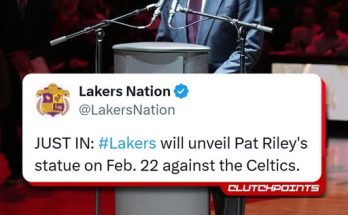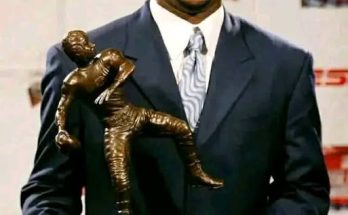The 2025 NFL Draft was a pivotal moment for the Chicago Bears, a franchise at a critical juncture as it builds around a young core and looks to finally stabilize its long-troubled quarterback situation. With high expectations and a front office led by general manager Ryan Poles looking to capitalize on a bounty of draft capital, Chicago entered this year’s draft with both urgency and opportunity. Armed with multiple early-round picks and a vision for the future, the Bears sought immediate contributors and long-term building blocks.
The Bears’ approach this year was calculated, disciplined, and focused on complementing the pieces they’ve already assembled. With the franchise’s fortunes tied to the progression of young quarterback Caleb Williams—drafted No. 1 overall—the rest of the 2025 class reflects a deliberate attempt to put him in the best possible position to succeed, while also fortifying key spots on both sides of the ball. Below is a comprehensive look at every Bears pick from the 2025 NFL Draft, complete with grades, scouting reports, and how each prospect fits into Chicago’s evolving identity.
With the first overall pick, the Bears did what everyone expected and what they’ve been building toward for more than a year: They selected USC quarterback Caleb Williams. Considered a generational prospect by many scouts, Williams brings a dynamic playmaking ability that Chicago has never had at the quarterback position. He possesses elite arm talent, off-script creativity, and a competitive fire that has drawn comparisons to Patrick Mahomes. Williams steps into a situation where the infrastructure around him—highlighted by Pro Bowl receiver DJ Moore, newly acquired Keenan Allen, and a strong offensive line—offers the rare combination of talent and stability for a rookie quarterback.
From a schematic perspective, Williams is a perfect fit for offensive coordinator Shane Waldron’s system. His ability to process quickly, deliver throws at multiple arm angles, and extend plays with his legs gives the Bears’ offense a level of unpredictability it hasn’t had in decades. There will be growing pains, as there are with any rookie QB, but Williams has the rare poise and leadership traits that suggest he’s prepared to face the pressure of playing in a city that’s long starved for quarterback excellence.
The Bears didn’t stop with Williams. Later in the first round, they doubled down on offensive weapons by selecting Washington wide receiver Rome Odunze with the No. 9 pick, giving Williams yet another high-end target to grow with. Odunze, a 6-foot-3 wideout with elite ball skills and polished route-running ability, was widely regarded as one of the most complete receivers in the draft. His presence in a receiving corps that already includes Moore and Allen immediately makes Chicago one of the deepest and most versatile wide receiver units in the NFL.
Odunze’s ability to win contested catches, stretch the field, and work the boundary makes him a perfect complement to Moore’s YAC (yards after catch) ability and Allen’s route precision. He also brings a mature, team-first mentality and has experience in a pro-style offense that should ease his transition. The Bears will likely rotate him into various alignments early on, using his size to create mismatches against smaller corners while gradually building his role as he gains chemistry with Williams.
On Day 2, Chicago continued to address needs while adding quality talent and depth. In the second round, the Bears selected Penn State offensive tackle Olu Fashanu, a powerful and technically sound lineman who many projected as a first-round pick. Fashanu slides in as either an immediate starter at right tackle or an eventual successor at left tackle depending on how the Bears handle Braxton Jones’ future. Fashanu’s strength in pass protection and quick footwork make him a natural fit to help protect Williams’ blindside or anchor the right edge of the line.
What sets Fashanu apart is his polish and football IQ. He consistently wins with leverage, keeps a wide base, and rarely loses hand battles at the point of attack. His presence gives the Bears options and depth in the trenches, and if he develops into what many scouts believe he can be, Chicago may have landed a franchise-caliber tackle in the second round.
The third round saw the Bears address the defensive side of the ball, selecting Clemson cornerback Nate Wiggins. A long, fluid athlete with elite closing speed and impressive ball skills, Wiggins offers immediate help in nickel and sub-packages while also having long-term starting potential on the outside. With Jaylon Johnson locked into one cornerback spot, Wiggins adds another high-upside player to a young and hungry secondary.
Wiggins’ instincts in coverage, especially in man schemes, allow him to play with confidence. He’s aggressive at the catch point and has the ability to erase vertical threats. However, he’ll need to refine his tackling technique and bulk up to withstand the physicality of the NFL. That said, his upside is undeniable, and he brings a swagger to the secondary that defensive coordinator Eric Washington will surely love to mold.
In the fourth round, Chicago continued to build its defensive depth by selecting Texas linebacker Jaylan Ford. A rangy, sideline-to-sideline defender with strong diagnostic skills, Ford profiles as a potential special teams standout early on and a rotational linebacker in base and nickel packages. With the Bears looking to replace Tremaine Edmunds in the long term, Ford offers a developmental player with leadership traits and versatility.
Ford was the heart and soul of the Texas defense in 2024 and consistently showed up in big moments. His ability to read run keys, cover tight ends in space, and blitz effectively adds another dimension to the Bears’ linebacking corps. He’ll need time to acclimate to the speed of the NFL, but his instincts and motor give him a solid floor as a contributor.
The Bears rounded out the draft with a trio of value picks in the later rounds, including LSU defensive tackle Maason Smith in the fifth. Smith is a high-upside interior lineman whose tape flashes moments of pure dominance. At 6-foot-5, 310 pounds, he has a rare blend of size, length, and explosiveness off the snap. While injuries and inconsistency caused his draft stock to fall, Chicago believes its coaching staff can unlock his full potential. If he stays healthy and develops better pad level discipline, Smith could become a force in rotational duty or even a long-term starter next to Gervon Dexter Sr.
In the sixth round, the Bears selected Louisville safety Cam’Ron Kelly, a versatile defensive back with experience playing multiple positions in the secondary. Kelly’s hybrid ability to play in the box or cover deep zones gives Chicago a chess piece for sub-packages and special teams. His football IQ, physicality, and leadership presence were evident at Louisville, and while he may not project as a day-one starter, he fits the mold of a smart, team-first defender who can carve out a role with effort and reliability.
The final pick of Chicago’s 2025 draft class came in the seventh round, where they grabbed Illinois State running back Nigel Barnes. A shifty, compact runner with surprising contact balance and vision, Barnes dominated the FCS level and now gets a shot to prove himself on the big stage. While he faces an uphill battle for touches behind Khalil Herbert and Roschon Johnson, his quick feet and pass-catching ability could make him a useful change-of-pace option or return man.
Overall, the 2025 draft class represents a major turning point for the Bears. The selections of Caleb Williams and Rome Odunze signal a new era of offense in Chicago—one centered around explosive plays, creativity, and sustained quarterback excellence. By adding foundational talent on the offensive line and key depth on defense, the Bears addressed immediate needs while maintaining a long-term developmental lens.
More importantly, each pick seems to reflect a clear identity: speed, toughness, and football intelligence. There were no wasted selections, no head-scratching reaches—just smart, thoughtful picks that fit what Chicago is trying to build. With a franchise quarterback now in place, the supporting cast steadily improving, and the vision of Poles and head coach Matt Eberflus starting to take hold, the Bears are no longer stuck in the cycle of mediocrity. They’re building something real.
In a league where quarterback play reigns supreme, the Bears may have finally found their answer. And with the supporting cast growing stronger through a well-executed draft, the winds of change in Chicago are finally blowing in the right direction. For Bears fans who have waited decades for a reason to believe—this class offers more than just hope. It offers a blueprint for sustained success.



